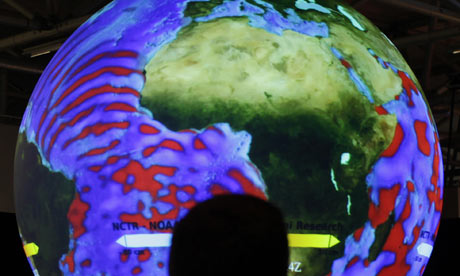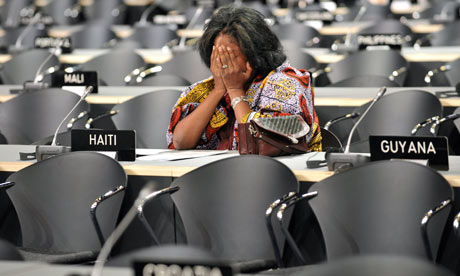
Beyond Nostalgia, Vinyl Albums and Turntables Are Returning
Andrea Mohin/The New York Times
From left, Adam Dean, Donahue Lovelace and Eddy Delahoz, all of whom attend the Institute of Audio Research, at the Best Buy in Union Square.
Article Tools Sponsored By
By PATRICK McGEEHAN
Published: December 6, 2009
At a glance, the far corner of the main floor of J&R Music looks familiar to anybody old enough to have scratched a record by accident. There are cardboard boxes filled with albums by the likes of Miles Davis and the Beach Boys that could be stacked in any musty attic in America.
But this is no music morgue; it is more like a life-support unit for an entertainment medium that has managed to avoid extinction, despite numerous predictions to the contrary. The bins above the boxes hold new records — freshly pressed albums of classic rock as well as vinyl versions of the latest releases from hip-hop icons like 50 Cent and Diddy and new pop stars like Norah Jones and Lady Gaga.
And with the curious resurgence of vinyl, a parallel revival has emerged: The turntable, once thought to have taken up obsolescence with reel-to-reel and eight-track tape players, has been reborn.
J&R Music, at 23 Park Row southeast of City Hall Park, now carries 21 different turntables at prices ranging from $85 to $875. Some are traditional analog record players; others are designed to connect to computers for converting music to digital files.
Rachelle Friedman, the co-owner of J&R, said the store is selling more vinyl and turntables than it has in at least a decade, fueled largely by growing demand from members of the iPod generation.
“It’s all these kids that are really ramping up their vinyl collections,” Ms. Friedman said. “New customers are discovering the quality of the sound. They’re discovering liner notes and graphics.” In many instances, the vinyl album of today is thicker and sounds better than those during vinyl’s heyday in the 1960s and 1970s.
Sales of vinyl albums have been climbing steadily for several years, tromping on the notion that the rebound was just a fad. Through late November, more than 2.1 million vinyl records had been sold in 2009, an increase of more than 35 percent in a year, according to Nielsen Soundscan. That total, though it represents less than 1 percent of all album sales, including CDs and digital downloads, is the highest for vinyl records in any year since Nielsen began tracking them in 1991.
Sales of CDs, meanwhile, have been falling fast, displaced by the downloading of digital files of songs from services like iTunes. Sales of albums on CD, which generally cost half as much as their vinyl counterparts, have dropped almost 20 percent this year, according to Nielsen.
With overall sales down, numerous big music-store chains like Tower Records, Virgin Megastore and HMV have pulled out of Manhattan, leaving music sales largely to online merchants and the few small, die-hard record shops scattered about Greenwich Village and Brooklyn.
One exception has been Best Buy, a national electronics chain that recently opened its sixth store in Manhattan. A year ago, the chain started stocking vinyl albums in about 50 of its stores, including one on the Upper East Side. Their presence, with their alluring cover art, still has the power to stun.
“Some individuals come into our store and they stop in their tracks,” said Andre Sam, a sales representative at Best Buy’s store on East 86th Street. “They don’t expect to see this. You can see them reminiscing as they start looking at the album covers.”
Last week, that store and a new Best Buy on Union Square installed departments, dubbed Club Beats, where customers can test out turntables and other equipment that DJs use to mix music. “They can spin, they can mix, they can scratch, whatever they want to do,” Mr. Sam said.
He suggested that video games deserved some credit for the resurgence of interest in vinyl albums and turntables. Popular games like Guitar Hero and Rockband have introduced young customers to classic rock and pop artists like the Beatles and Metallica, while DJ Hero has inspired some to try their hands at mixing music for real.
Not all of the turntables in these stores are designed to do anything so old-school as spinning actual records. A few models are still made for that purpose, many of them with cables that connect to computers so that the music can be transferred to portable devices. But others simply allow their users to simulate the manipulation of records while the songs they are mixing are being fed from iPods.
Interest from younger listeners is what convinced music industry executives that vinyl had staying power this time around. As more record labels added vinyl versions of new releases, the industry had to scramble to find places to press discs, said Mike Jbara, president and chief executive of the sales and distribution division of Warner Music Group.
“It is absolutely easy to say vinyl doesn’t make sense when you look at convenience, portability, all those things,” Mr. Jbara said. “But all the really great stuff in our lives comes from a root of passion or love.”
RE: What the article doesn't mention is the new digital wave of dj'ing, "vinyl emulation software", that most use for mixing and scratching now. I myself use TORQ, most dj's at bars and clubs use a similar program, usually SCRATCH-LIVE. For me it was a long time coming, the day I no longer had to lug around my cases and bags of vinyl records. Instead, all I need to bring is my computer, a little converter box and two pieces of "blank" vinyl. I can play any MP3 or audio sample that is on my computer, thru the converter box and on to vinyl records that spin on my Numark TTX turntables. This has transformed my, and other dj's ability to have a absolutely huge library of tunes to rock a party with. I don't know the science of it all, but it's insanely amazing and will blow you away IF you've never heard of it before. PEACE





















